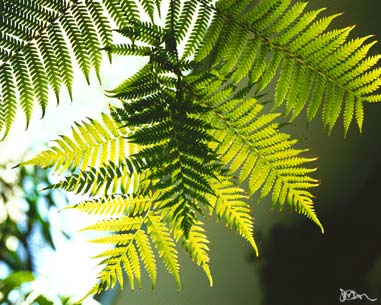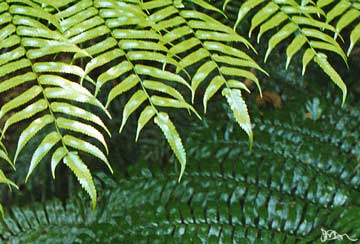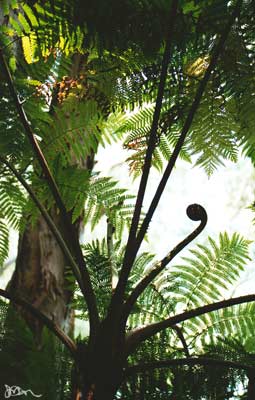 |
|
The rainforests in the mountains of the Wet Tropics of North Queensland are ancient. They are, perhaps, the oldest rainforests on Earth. They are home to an immense diversity of plants and animals, vibrant with life. Here and there, iridescent indigo Ulysses butterflies float over the tree canopy. Ferns grow from forest floor to treetop: it is a ferny wonderland. To the east, from the ridges, across the blue of the Coral Sea, you can glimpse the sandy cays and lagoons of the Great Barrier Reef. On the coastal plains below the rainforest ridges, the city of Cairns spreads on land once cleared for sugar cane. Some pockets of the original vegetation remain - mangroves near the shoreline and along the estuaries, where Saltwater Crocodiles abound; drier Bush with Eucalypts and giant Melaleuca paperbarks; and the occasional pocket of lowland rainforest. Across the ranges, to the west and north, the dry inland begins. Flat, sparsely vegetated because of rainshadow, it is in spectacular contrast to the forests only a few tens of kilometres to the east. The photographs in this
gallery are a celebration of the vibrant greenness of the Wet Tropics.
I have deliberately left the images large and minimally compressed
to retain some of the beauty of the original photographs.
|
 |
Tree ferns respond to the benign climate of the Wet Tropics. Further south, they cling to sheltered gullies and shaded places with tree over-canopy. Here, they grow where they feel like it. |
| Cyathea rebeccae has a distinctly different look to most of its relatives in the region. It has simple, undivided pinnae that are dark and glossy except when newly unfurled, when they are a beautiful pale green. It grows in the more sheltered places, usually in or near rainforest, but often along the roadsides. |  |
 |
Another Cyathea, possibly C. cooperi, with a new frond stretching to the sunlight. The tree beyond is a large Melaleuca paperbark. Some of the paperbarks in this region have trunk diameters of several metres and are perhaps 800 years old. They live within a stone's throw of the shoreline, showing the species' predilection for swampy areas. Their botanical name derives from an initial observation of specimens that had been subject to a local bushfire which had burnt and blackened their outer bark. Normally they are covered with thick soft layers of bark that you can peel back in layers like thin brown paper. |